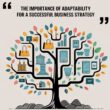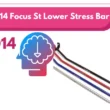Business strategy play important role in every business. Within the field of software development, two unique mindsets direct how digital products are created and managed-the project mindset and the product mindset. Their long-term goals, approaches, and philosophies differ greatly,
even though they both strive for successful results. For teams, and organizations like briteside.us that aim for productivity, creativity, and long-term growth, comprehending these distinctions is essential for success. Understanding these differences can be crucial when striving towards productivity and creativity in the longer run in the dynamic software development industry.
The Project Mindset
Software developers approach projects with the mentality of a limited journey with a distinct start and finish. Usually, projects are started with specific objectives to be accomplished within predetermined parameters like resources, time, and money. The focus in this case is on providing a predefined set of features or functionalities within the specified constraints. The project is declared finished when these goals are achieved, and resources are transferred to new projects.
Characteristics of the Project Mindset
The following are the characteristics of a project mindset.
Fixed Scope and Timeline in Project Management
Projects work within clearly defined parameters, particularly when it comes to scope and timeline. These boundaries are established at the beginning of the project through detailed planning, including requirement gathering and defining specific deliverables. Once the project scope is agreed upon, the team focuses on delivering the required outcomes within the set timeframe. Any changes that arise during the development phase are carefully managed to avoid scope creep, which can cause delays and additional costs.
Preventing Scope Creep
One of the biggest risks in project management is scope creep, which occurs when additional features or changes are introduced without proper oversight. To prevent this, project managers must have strong control mechanisms in place, such as clear change management processes. This ensures that any modifications are reviewed, assessed for their impact on the timeline and budget, and approved only if they are essential. Regular communication with stakeholders helps manage expectations and keeps the project on track.
Timetable Adherence
Adhering to the project timeline is equally crucial. Detailed scheduling, along with task prioritization, ensures that all activities are aligned with the project’s goals and deadlines. Milestones and progress tracking help teams stay focused on their targets. This disciplined approach ensures that the project is completed on time, within budget, and according to the initial scope, leading to successful outcomes.
Resource Optimization
Resources, including human capital and technology, are allocated based on the project’s requirements and deadlines. Teams are assembled, often comprising members with specialized skills relevant to the project’s objectives.
Outcome-Oriented
The primary focus of the project mindset is on delivering tangible outcomes. Success is measured by the project’s adherence to predefined goals, budgetary constraints, and timeline.
Hierarchical Structure
Projects are typically organized hierarchically, with clear lines of authority and accountability. Decision-making processes are streamlined to ensure efficient progress towards project goals.
How to Manage Risks: Projects vs. Products
In both project management and product development, risk mitigation is crucial to success. However, the approach to handling risks differs significantly between these two realms. While projects focus on eliminating uncertainty through careful planning and execution, products thrive by embracing uncertainty and adapting to change. Understanding these differences can be key to successfully navigating both processes. Below, we’ll break down how each approach works and what you can learn from both strategies.
Projects: Mitigating Risk with Detailed Planning
When it comes to project management, mitigating risk begins with thorough planning and precise execution. A project typically has a clear start and end date, with predefined deliverables and a roadmap that outlines every step toward achieving the final goal. Because projects are often constrained by time, budget, and scope, any deviation can cause significant disruptions. Therefore, the focus is on risk prevention from the outset.
The Product Mindset
In comparison to the project mentality, the product-oriented approach adopts a more comprehensive and iterative strategy for software development. Instead of considering software as a one-time output, it regards it as an ongoing entity that develops over time in response to user input, market changes, and
technological progress. The product mindset emphasizes continual enhancement, flexibility, and customer contentment.
Characteristics of the Product Mindset
The characteristics of the product mindset are as follows.
Iterative Development
Iterative product development and enhancement are carried out, with regular releases or revisions made under customer feedback and market needs. This methodical approach facilitates swift experimentation and adjustment to changing customer requirements.
Customer-Centricity
A key component of the product mindset is comprehending and satisfying end users’ needs. To guarantee alignment with customer expectations, user feedback is actively sought out and integrated into the product development process.
Long-Term Vision
Projects have a specific conclusion, while products are designed with a long-term perspective in focus. The focus of development work is on establishing enduring solutions that can adapt and expand over time.
Cross-Functional Teams
Teams working on product development projects frequently span multiple functional domains and include individuals with a variety of expertise, from marketing and customer service to design and development. This interdisciplinary approach fosters creativity and collaboration.
Data-Driven Decision Making
Data analysis and measurement are essential in shaping decisions related to product development. Key performance indicators are closely monitored to assess the success of the product and pinpoint potential areas for enhancement.
Bridging the Gap
Although they reflect different approaches to software development, the project and product mindsets don’t always have to conflict with one another. Successful companies frequently employ aspects of both perspectives to achieve an equilibrium between immediate results and sustained value development. The following are some strategies to help bridge the gap between the two:
Adaptive Project Management
Embrace agile methodologies that allow for flexibility and adaptation to changing requirements while still adhering to project constraints.
Product-Centric Project Planning
Incorporate elements of the product mindset, such as user-centric design and iterative development, into project planning and execution.
Continuous Learning and Improvement
Encourage project teams to share knowledge, experiment, and create a feedback loop culture so that learning and improvement are ongoing processes.
Empowered Cross-Functional Teams
Empower cross-functional teams to take ownership of both project delivery and long-term product success, fostering a sense of accountability and collaboration.
Strategic Alignment
Make sure that projects are in line with organizational goals and overarching product goals, keeping the delivery of value to customers front and center.
Final Lines
In IT managed services, the primary goal of both project and product mindsets is to ensure top-notch solutions that satisfy user requirements and contribute to business advancement. Even though there may be variations in approaches and goals, organizations can effectively manage the intricacies of software development. By comprehending the distinctions between these mindsets and embracing a versatile, adjustable approach to their strategies and procedures, businesses can develop products that captivate users within today’s swift.
Read Post: Nebraska Business Entity Search








